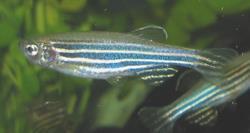Acute toxicity testing of ionic liquids with zebrafish suggests that some of these compounds pose a risk to the aquatic environment.
Ionic solvents may not be as green as first believed. Labelled as environmentally safe, the non-volatile solvents are widely used in chemical processing because they do not contribute significantly to air pollution. However, these green credentials are currently unproven in the aquatic environment.

Led by Cinzia Chiappe from the University of Pisa, a team of Italian researchers carried out a series of acute toxicity tests on Danio rerio zebrafish. The zebrafish were exposed to low concentrations of some commonly used ionic solvents, both anionic and cationic, and their behaviour was observed. Surprisingly, despite the fish being exposed only to low ionic liquid concentrations of 10 milligrams per litre, they showed unusual behaviour as a result of toxic effects. The exposed fish were less active, swam erratically or were completely motionless in the water for long periods.
Microscopic examination of the tissue of the exposed fish revealed that the secondary gill lamellae, which in adult fish are used for gas exchange, were abnormal and showed skin and gill hyperplasia. Gill hyperplasia causes the secondary gill lamellae to swell and thicken, restricting water flow across the gill filaments and causing the fish to experience respiratory problems and stress. It is also an ideal situation for opportunistic bacteria and parasites to thrive.
The exposure concentration used was lower than the toxicity values for some conventional solvents that are known to be environmental pollutants such as methanol, dichloromethane, acetonitrile, aniline and triethylamine.
The potential damage that these liquids may cause to the aquatic environment highlights a real cause for concern. As their popularity with industrial chemists increases, the probability that they will find their way into watercourses through effluent discharges or accidental spills will rise.
Janet Crombie
References
C Pretti, C Chiappe, D Pieraccini, M Gregori, F Abramo, G Monni and L Intorre, Green Chem., 2005 (DOI: 10.1039/<MAN>b511554j</MAN>)






No comments yet